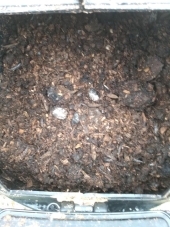



Elizabeth Geller wrote:I can’t help but notice that nobody that responded to this thread has actually used one of these types of bins!
I know it’s an older thread, but I hate to think that someone might run across it and pass on buying an excellent tool that would be perfect for their particular situation because of the comments here.
Based on 8+ years of experience with Algreen SoilSavers, the answer to the OP’s question is yes, you can make great compost with a plastic bin unit.
I’d be happy to share more information and address some misconceptions if anybody is interested.



Chris Kott wrote:I read that one of the ways people often do a keto diet wrong is to have too high a ratio of protein to fat, as in, too much protein throws a wrench into things. Can anyone explain this mechanism, and what the appropriate ratio is? I had an article I am still looking for that explained it, but I browsed it and lost it.
-CK



There is an elephant in the room, a blaringly unasked question there: what changed during this short window of time to affect national statistics that dramatically? It was not a sudden, nation-wide gluttonfest, nor was it an anti-exercise pandemic.Low and stable until 1976, elevated with rapid increase by 1980.

John Suavecito wrote:Since 1977, there have been a lot more changes than more carb. More fat, fewer vegies, more sugar, bigger portions, more soda, more meat, way more pills from Big Pharma, more toxins, more processed food, more video games, more sedentary, Less hiking and camping, most young people staying indoors, young people don't ride bikes anymore, etc. Deciding its due to the carb isn't clear. Others blame meat, processed food, sugar, etc.